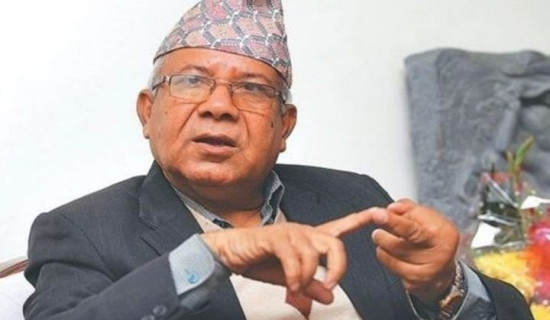- Monday, 15 December 2025
Nepal Faces Shortage Of Health Workers
Nepal’s health education system is now governed by the National Medical Education Act-2075 and Regulations-2077, which define the areas of scope and complete procedures of this system. Prior to NME Act-2075, individual universities and concerned institutions were conducting entrance examinations with fixed fee structures and exam schedules that were regulated by the governing universities. They used to take about a month to complete the enrollment process, and classes started after the entrance examination. But with the enactment of the NME Act-2075 and Regulations-2077, the commission takes more than four months to wrap up the matching of the students.
After the enactment of these legal frameworks, a total of 72 PCL nursing colleges and 24 graduate-level colleges collapsed. Now there are only 45 PCL nursing colleges out of 117 and 29 bachelor's-level medical colleges out of 53 before the enforcement of the NME Act. These colleges have lost about Rs. 11.70 billion investment in the PCL nursing teaching institutions alone.
Serious issue
This loss of financial resources, jobs, and supply of health workers for the economy is a very serious issue that needs to be addressed by the government. Basically, there are few causes for the closure of such a large number of institutions, which are equally about to go bankrupt as the rest of the nursing teaching institutions as well. Some of the major causes of such problems with nursing educational institutions include the provision of 100-bed hospital, centralised entrance examination system, and the permission for them to run only one programme either from universities and or CTEVT affiliated. Therefore, some institutes fail to meet the requirements and either run away or change the domain. This is a general issue with the current medical colleges. However, there is much conflicting understanding of PCL nursing education particularly.
The NME Act-2075 does not include PCL nursing education because Clause 44 of the regulations and Annex 8 do not include the PCL nursing programme as the medical education to be administered by the Act. This means PCL nursing should run according to the CTEVT Act, 2045, as it did before the NME Act-2075. There is logic to this: PCL nursing is school-level education and has been governed by the CTEVT Act, 2045, and it should be completely regulated and controlled under the CTEVT Act and regulations. Now, pointing to the Medical Education Commission, CTEVT has topped entrance since 2077, and nursing colleges are not getting students according to the number of seats allowed to enroll in the PCL nursing programme.
There is nothing to do with the NME Act for nursing education enrollment because it is clear that PCL nursing is school-level education and should be governed under this act as it was before the NME Act. If the CTEVT officials understand their autonomous right to govern their own program, this problem will be solved very easily. Nepal has been facing about 56,050 health professional shortages, according to an MEC survey. There are about 10,139 health service providers, and the demand for such health service providers has yet to reach a desired level as that MEC survey does not cover the private and personal demand for health services.
As of June 2, 2023 update on the official website of the Nepal Nursing Council (NNC), only 73,883 nurses are registered out of a total professional registration of 113,370. This is the total number of registrations, but no data was found for how many nurses are still in their job and have shifted to another profession since their registration with the NNC. The government has the policy of reaching out to health services at the local level and in schools as well. Individuals are also now starting to use personal nursing care for their elderly parents. If we include this potential demand for nursing professionals, Nepal will have a big scope for nurses. Nurses are already in short supply in the domestic market, but the government has agreed to supply nurses to different countries, such as the United Kingdom and Japan. Japan, Australia, Canada, and the USA are priorities of individual nurses willing to go abroad.
High demand
Since Nepal has reduced the production of nurses amid high demand for them in the domestic market, India has proposed 157 nursing colleges introducing similar pedagogy on the border side of Nepal. If we look at this situation minutely, due to the current 50 percentile policy of centralised entrance examinations, we are sending students abroad for medical education as well. In 2078/079, the highest number of students went to Japan for nursing education, followed by Austria, India, South Korea, Canada, and the USA. Nepal is not only sending students for the study; it is also sending productive professional human resources, cash money, and a big trade-off cost for the economy, as well as government investment in school education.
For an economic development, the health sector is a significantly contributing sector because of healthy human capital, productivity, social security costs, health service trade, and highly professional jobs in the global market. Because of existing facilities and professional growth practices, the majority of health professionals are flying abroad for better opportunities and growth. Ignoring the possibility of a health educational hub in Nepal, the government’s policy itself is distorting the nation’s health education and health professions.
(The author is an economist.)
















